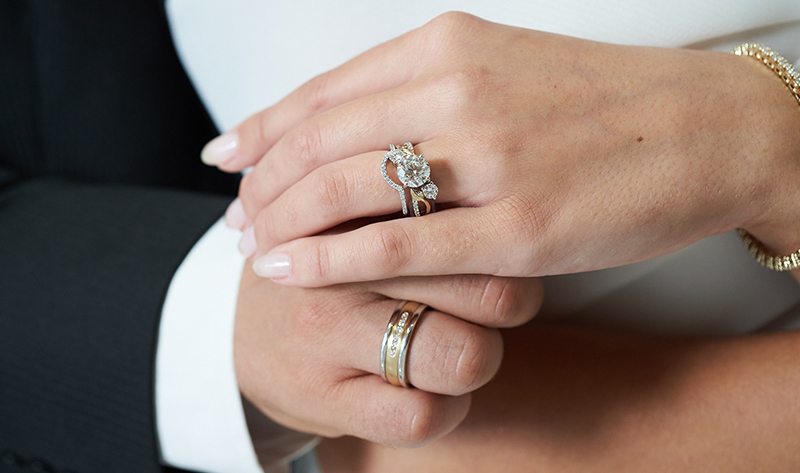Wedding Invitation Etiquette and When to Send Wedding Invitations
One of the things you need to pay attention to is invitation etiquette as well as the right time to send the wedding invites. You need to create a good image before the wedding, and so you need to nail the entire process. However, this can be a daunting task if you don’t know the exact things to do to ensure the invites are sent out successfully.
Fortunately, this piece will help you know the wedding invitation etiquette you should watch out for, as well as the right time to send an invite. So read on to discover more.
Wedding Invitation Etiquette
There’s a big difference between traditional wedding do’s and don’ts that no longer apply. Back then, weddings used to take a formal setting which isn’t the case in today’s society. More people are beginning to lean on the casual side in most of their wedding preparations.
However, the only constant element is the wedding invitation etiquette observed today. Below you will learn etiquette such as what to include in a wedding invitation, what to leave out, and how to address the envelopes.
What Information Should Be Listed On The Invitation
You and your partner can decide to go with a formal invitation which can work in numerous scenarios. A formal reception will be fitting if you are having a religious or traditional wedding. This will help send a message to your guests that the reception will be one to remember.
However, if you and your partner decide to go with a more casual ceremony, the phrasing should also be casual to give the attendees a heads-up of what to expect. Even though you decide to go with casual or formal phrasing, there is information that you can never miss to indicate.
You need to identify whose event it is, the date it will happen, and the location.That means that the invitation should not miss the name of the couple to be married, the venue, and the material day.
What Information Should Be Left Off
While it’s essential to give as much information as possible regarding the event on the invitations, there’s a limit to what you can share and what you shouldn’t. To help you, here are things that should not appear anywhere near the invitation:
- Details regarding the gift shouldn’t be mentioned.
- Matters regarding the wedding registry can miss out.
- Wedding information that might change in due course.
- The dress code preferences and restrictions.
Even though this information is relevant and will be shared at some point in time, it’s best to find an alternative way of communicating this information. So send the right wedding invitation with the right information for a successful wedding.
How The Envelopes Should Be Addressed
The wedding invitation envelope should be able to draw the reader’s attention at first glance. It should include relevant information such as the Mrs and Mr who are invited to witness the two couples exchange vows on their big day.
However, this can change the invitation being addressed to youths or kids. You might go with their first names or their two names in a formal setting. Nonetheless, ensure the spelling is accurate before you send out the information.
When to Send Your Wedding Invitations
There’s been a lot of debate on social platforms about when exactly is the right time to release wedding invitations to your guests to ensure they plan efficiently for the big day. In this section, this debate will be put to rest as you’ll get to know the right time to send the invitations, tips, and how to deal with the RSVPs.
The Ideal Timeline
The best time to mail out wedding invites is 6-8 weeks before the wedding day. This offers visitors adequate time to plan their journey, schedule breaks from work, and RSVP. Sending out the invitations early enough will ensure guests plan on what they’ll wear, the gifts they’ll bring, and how they will take a day off from work.
Tips For Sending Invitations to Out-Of-Town Guests
When extending invites to out-of-town visitors, include details on hotels, transportation, and activities to do in the area. A map or instructions to the location might also be useful. To accommodate for postal delivery delays, send invites to out-of-town visitors a few days sooner than local attendees.
Nonetheless, the invites must be sent out as early as possible so the guest has enough time to prepare for the event.
People always have lined out schedules, so informing them prior will help them reschedule in time so that their activities don’t clash with your event. So send out the invites in time for great attendance.
How To Handle Late RSVPs And Last-Minute Guest Additions
Managing late RSVPs and unexpected visitor additions promptly and pleasantly is critical. Attendees who have not replied to an RSVP date should be contacted to verify their presence or absence.
If you have last-minute visitor additions, do your utmost to welcome them, but clarify any constraints or additional fees that come with having late arrivals. Make note of any changes to your invite list and meet deadlines.
Conclusion
It is quite easy to mess up on wedding etiquette if you don’t know exactly what to do. Also, you can make significant mistakes by sending the invites late which might clash with your visitor’s schedule.
As such, it’s essential to ensure that the invites go out early so guests can have time to plan the gifts they’ll get and how they’ll convince their bosses to have a day off. This is a considerate way to ensure everybody makes it to your big day in high spirits.
If you’re looking for wedding favors to give your guests, check out our online store at Callie. We have a variety of items that we can customize to match the recipient of the gift.


































